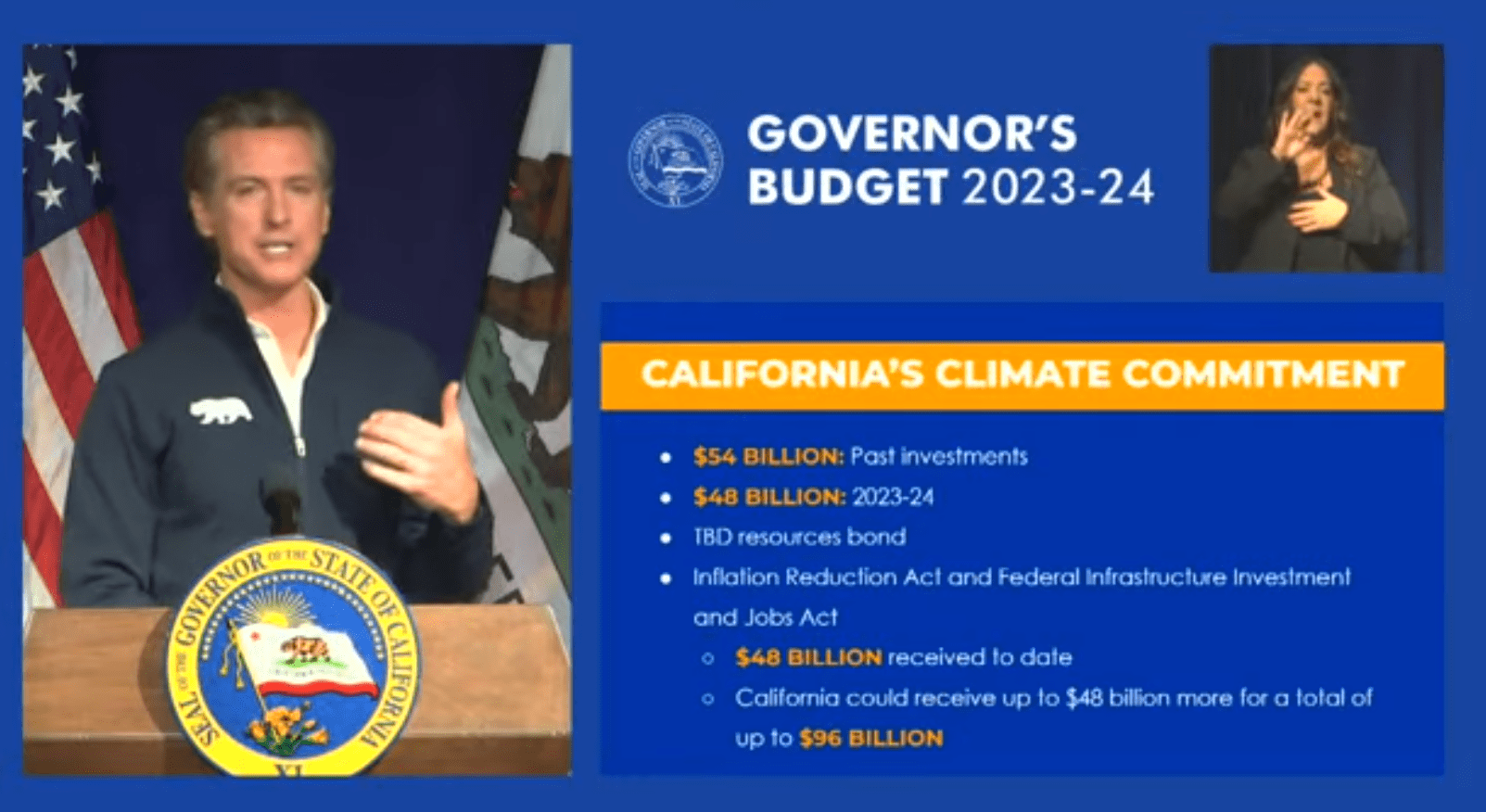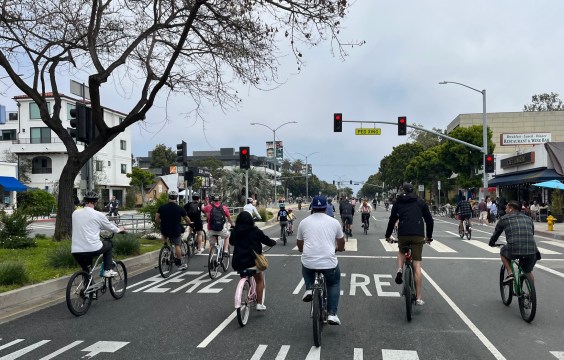Note: GJEL Accident Attorneys regularly sponsors coverage on Streetsblog San Francisco and Streetsblog California. Unless noted in the story, GJEL Accident Attorneys is not consulted for the content or editorial direction of the sponsored content.
Note: This story has been corrected since it was posted. The proposed cuts to the TIRCP amount to $2 billion, not $20 billion (!), and that program is grant-based rather than formula-based as previously and mistakenly stated.
California Governor Gavin Newsom presented his draft 2023-34 budget yesterday, but during his customary long and detailed presentation as well as the question and answer session afterwards no one addressed the funding crisis faced by transit agencies. The state is in a tough spot: after record high revenue for several years, 2024 promises to be a reset, with an estimated $22.5 billion shortfall. That means cuts had to be made somewhere.
But the transit issues is as dire as, and connected to, almost every other issue the Governor reiterated his commitment to, including equity, housing, the cost of living, health care, and education. The Governor's proposed budget is just that - a draft that will undergo changes as the state's financial outlook becomes clear over the next few months - and it is filled with accounting tricks to move money from different funding sources and from future years.
Most of his suggested cuts are in the climate investments and transportation budget that was increased last year when the California budget was flush. Specifically, the Transit and Intercity Rail Program (TIRCP), which is grant-based and funds things like much-needed upgrades at BART and electrifying Caltrain, will see a reduction of $2 billion in future funding, and last year's one-time boost for the Active Transportation Program (ATP), which finds projects that support biking and walking, will be reduced by half. However, said Newsom, $300 million of the ATP budget will be backfilled from state highway funds, and the remaining $200 million will be shifted from future years of the current cycle.
That is, current Cycle 6 allocations should be able to go forward as planned - at least for now. Next year's budget may tell a different story.
It's confusing, and it involves a bit of budgeting sleight of hand, but it may not be as terrible as it first looks. There is always some play in transportation budgeting, since unforeseen delays caused by issues outside of funding can push projects into future years anyway. But clawing back half of a one-time bump within a year of having promised it looks an awful lot like a lack of commitment, and undermines the Newsom administration's rhetoric about how important it is to invest in sustainability.
Outside the Capitol building, transit advocates held a rally asking Newsom to help find a new and reliable way to pay for transit operations to avoid what is an existential crisis for public transportation. Ridership and revenue plummeted during COVID, and has not yet recovered, while costs are rising and emergency federal funding is about to run out. If agencies are forced to make service cuts because they have no money, ridership and revenue will fall further [PDF]. Transit advocates have been sounding the alarm for a couple of years that we may soon see the end of public transit agencies, an outcome not to be desired by even the most ardent bus-hating driver among us. Without public transit, traffic and emissions can only be worse.
The Governor and his agency leaders tried to focus on the positive when they talked about the budget cuts: California continues to invest in fighting climate change at a higher level than anywhere else, they pointed out, and no one is backing down from state commitments to equity or to protecting the most vulnerable Californians. There is the potential for California to receive unprecedented federal funding, which may be able to backfill some of the cuts being made, and the cap-and-trade program continues to bring in strong revenue, which could be reallocated.
But the dire need to fund for public transit, especially operations, doesn't seem to be getting the attention it needs. Reporters asked questions about potential cuts to electric vehicle incentive programs, but not about how transit might be saved.
Senator Scott Wiener released a statement that whether the state budget is short or flush doesn't matter: California needs to come up with funding solutions for transit sooner than later. He writes:
While I fully understand the tough choices we have to make, we must not let our public transportation systems go over the impending fiscal cliff and enter a death spiral — where budget shortfalls lead to service cuts that lead to ridership drops that lead to further budget shortfalls and service cuts. The State must serve as a financial back-stop against this fiscal cliff to ensure our transit systems survive.
Unfortunately, the Governor’s proposed budget does not address the transit fiscal cliff; instead it cuts and defers transit capital funds, which will make it even harder for these systems to meet future needs, including California’s climate goals.
Allowing our transit systems to deteriorate and fall apart is simply not an acceptable option for California. Millions of Californians depend on public transportation to get to work, school, the doctor, the supermarket, or family. Transit isn’t optional. It’s an essential public good and an essential tool in meeting California’s ambitious climate goals and avoiding even worse traffic congestion.
As Newsom pointed out, the CA budget tends to whiplash along with the revenues from capital gains it relies on. But that doesn't mean it's impossible to create sustained, meaningful funding for crucial services. Transit operations have always been difficult to fund because the federal government balks at paying salaries, but relying on fare revenue to pay for operations is not sustainable.
There's a lesson in what's happening with the ATP as well. When it was flush with cash, California was willing to throw an extra $1 billion at it, in one-time funding that had to be paid out right away, without taking into account the resources needed to allocate, manage, and track the increased funding and projects. It's a wonder that the ATP is as organized and well-thought-out as it is.
What both transit and the ATP need are streams of steady, reliable funding that won't be clawed back when the rich find more tax write-offs. Without that, they will not be able to support the Californians that currently rely on them, let alone the hope that we can fight climate change by changing our transportation culture.
This is a first-draft budget, released in January to get discussions started. Governor Newsom will release a revised version in May that will reflect updated revenue estimates. If tax revenue this year or next comes in higher than estimated, or if unknown-as-yet federal investments are substantial, some of these budget shifts will be reversed, he promises.





